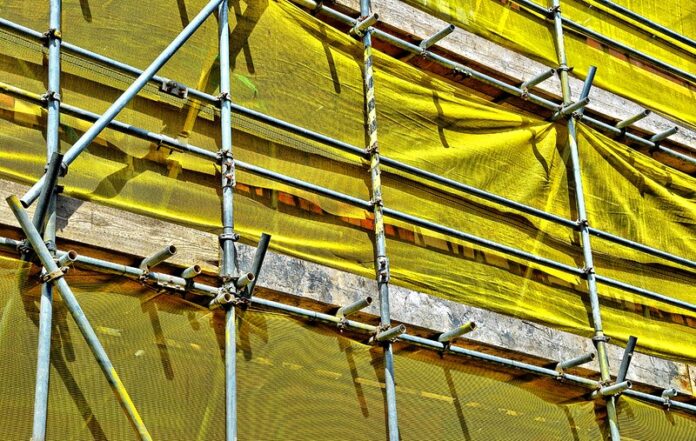Have you ever wondered why construction projects attract many inspections from the county and state officials to monitor safety measures and engineering standards? The construction industry is one of the fastest-growing industries in Australia due to the country’s growing economy attributed to infrastructural development and the entry of advanced technologies across all economic sectors.
The widespread infrastructure across major Australian cities has attracted foreign investors in the hotel, finance, and banking industries to set up operations in Sydney, Perth, Melbourne, and Canberra due to the promising signs of economic growth. However, construction projects across major cities have attracted strict scrutiny by city officials to ensure that engineering firms have employed adequate safety precautions when using scaffolding.
The Australian government is actively promoting workplace health and safety by applying health and safety standards to minimize workplace-related casualties and holding employers and contractors responsible for the loss of lives. Therefore, government agencies, construction companies, and independent entities have developed safety tips when using scaffolding as indicated below;
1. Guarantee Adequate Training
All workers on scaffolding need to be effectively trained in the design and operation of the structure. It helps construction workers know how to get on and off the scaffolding with minimal incidences of falls or injury.
Training ensures that workers are aware of the loading capacity on the scaffolding platform to ensure it is not overloaded with huge weights that can destabilize the structure. Plus, it ensures that workers understand the safety precautions and protocols when the structure collapses without warning.
2. Excellent Preparations
Construction companies and contractors are advised to set up the scaffolding site in excellent locations devoid of slopes, dips, and uneven ground to minimize the instability of the scaffolding structure. The on-site contractors and engineers need to assess the land on which the scaffolding will be installed to ensure its stability and sustain the construction materials’ massive weight. The contractors need to confirm all braces are in place and the locking mechanism is functional and properly secured.
3. Utilize the guardrails
For any construction project that is higher than 10 feet above the ground, the contractor should set up guardrails to prevent the possibility of workers losing balance on the platforms and falling to the ground. Guardrails reinforce support for workers daily, especially when carrying heavy loads to higher floors during construction.
When the construction is on hold for inspection, contractors are advised to use printed shade cloth for protection for the guardrails to minimize the possibility of rust, especially in rainy seasons. It helps maintain the integrity of the metal rods used in setting up the guardrails.
4. Frequent Maintenance
Repeated inspection on the scaffolding setup is essential during the construction period; it ensures that any unnecessary construction materials on the structure are removed and safely stored until they are needed. The scaffolding should be free of any obstruction, such as debris or construction tools, to minimize the possibility of injury to other workers using the structure.
5. Ensure all workers are licensed
Since all contractors in Australia are licensed, they are advised to hire licensed construction workers as it prevents the occurrence of accidents by 75% because they are well-aware of the risks involved in scaffolding. Hence, they must be aware of the precautions to take in cases of emergencies. Plus, it protects contractors from legal liability should an employee suffer an injury due to negligence or stupidity.
6. Pin down the hazards
Prepare a game plan before you start the process of scaffolding. You need to consider multiple aspects before you start the project, such as:
- Will the scaffolding be fixed in one place, or will it be moving while the project is in progress?
- Will your workers be performing their job near the power lines?
- Have you considered calculating the safe workload for the scaffolding?
Hence the identification of the possible scaffolding hazards on the worksite must be made before the project is started. Also, the safety team should keep monitoring the scaffolding platforms during the project to avoid any unforeseen incidents.
7. Scaffold netting or shade cloth for protection
Make use of multipurpose scaffold netting or shade cloth that can be used on construction sites. Not only does it offer protection from the strong wind but also safety for your workers. It is used to cover the entire building to avoid the accidental loss of construction tools, debris, and important material.
By making use of scaffold netting with a density up to 200 g / Sq. m, which is strong enough to save the life of a labourer falling from a significant height. Also, it will help the structure from deteriorating and will protect the bystanders from the construction tools.
You may consider using printed shade cloth for protection of the scaffolding while offering a nice look of the building to the passers-by. Take advantage of the printed shade cloth to educate the people of your community regarding the project. You may use this as an opportunity to promote your project if this is a project to construct a shopping mall, for instance.
8. Make the scaffolding platform secure
The scaffolding platform is intended to be attached to the building under construction or repair. In case bracing is not sufficiently secured, movement of the scaffolding will certainly cause displacement of an end resulting in a scaffolding platform with less stability.
Make sure scaffolding experts have used the certified locking systems and brace retention. At the time of assembly and dismantling, these systems are designed to operate without any hassle, and they are made to lock or secure to avoid the braces from being dislocated. Hence it is recommended not to replace the branded and authentic parts of the scaffolding structure provided by the manufacturer with simple nails or other miscellaneous items for substitution.
Scaffolding is an art that needs to be learned because it is the centre stage for any successful construction project that guarantees the safety of all workers. Therefore, contractors need to adhere to the safety guidelines and tips in scaffolding to maximize productivity within the team.



















